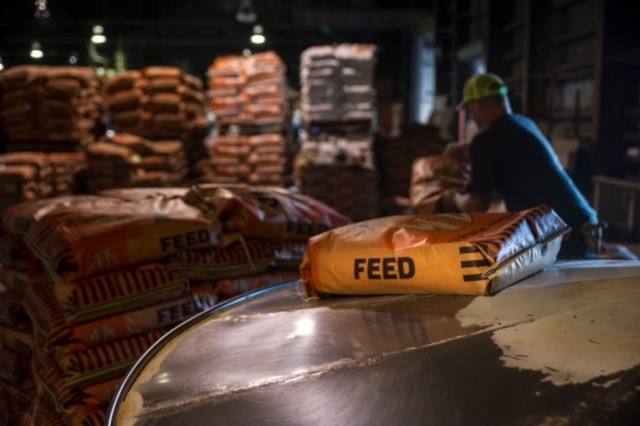
Agricultural News
The Solid Science Backing Up FDA's Purpose Behind the Veterinary Feed Directive
Tue, 20 Dec 2016 14:46:02 CST
 When tougher guidelines around the Veterinary Feed Directive go into effect next month, it will change the way producers, veterinarians and feed distributors obtain, dispense and use medically important antibiotics in the treatment of food animals.
When tougher guidelines around the Veterinary Feed Directive go into effect next month, it will change the way producers, veterinarians and feed distributors obtain, dispense and use medically important antibiotics in the treatment of food animals.
The more stringent VFD is expected to benefit animal health and welfare, as well as food safety. In fact, among the U.S. Food and Drug Administration's chief aims in enhancing the rule is more judicious use of antimicrobials, or antibiotics, and only when appropriate for specific animal health reasons.
Specifically, the FDA's focus is on reducing growth promotion uses of antimicrobials, said David White, associate dean for research at the University of Tennessee Institute of Agriculture and former FDA chief science officer.
"When you look at the way those antimicrobials are being used, there's no infectious disease being managed or treated. It's for growth promotion or improving feed efficiency of the animals," White said. "Unfortunately, you're having negative consequences of those uses in developing antimicrobial-resistant bacteria that can potentially contaminate meat, the environment and even produce, then subsequently transfer to humans."
In cases where that transfer may have occurred, a person could become sick, but an antibiotic may not work because the bacteria is resistant to medication similar to what was used in the food animal.
White said while the risk may tough to see, based on the series of events that must play out, it is there and so is the research to back up the concern.
"There's plenty of science to show that antibiotic use in animals selects for bacteria. But it gets a little grayer as you start moving from contaminating meat to causing infection to then being treated with an antibiotic and you don't get better," he said. "I think a lot of it is better stewardship on the farm. It's making sure antibiotics are used to treat a defined illness and you're using it for the labeled dose and duration."
As a result of the tighter VFD rule, beginning Jan. 1, 2017, producers will be required to get authorization or a prescription from a veterinarian before buying and administering medically important antibiotics that were previously available over-the-counter medications crucial to treating human diseases.
"'Medically important antimicrobials' is a big distinction," White said. "Those are the ones that are considered important for the treatment of a human disease. There are other antimicrobials that will not be so impacted."
The FDA has yet to set out specific metrics for the success of the new VFD, but its effects will certainly be closely monitored. In particular, data from the National Antimicrobial Resistance Monitoring System, a joint program between the FDA, U.S. Centers for Disease Control and Prevention and the U.S. Department of Agriculture, will be critical since it focuses on collecting antibiotic resistance information from farm to fork.
Advances in the area of genome sequencing also are helping scientists better pinpoint where antibiotic resistance is occurring and if it is moving back and forth between animals, food and people.
"We're able to sequence the whole genome of a bacteria and compare that to other organisms around the world and see where resistance is emerging. In some cases, when we see these multidrug-resistant salmonella, it may not have come from a cow in the U.S., rather it was isolated from a chili pepper in Thailand," White said. "So the importance of both national and global surveillance is going to take on increasing importance over time so we can really see where antibiotics are being used and from where resistance is coming."
For more information, visit www.fda.gov and search for "Veterinary Feed Directive" and contact the county Extension office.
Watch a video featuring Dr. David White explaining the science behind the FDA's move to strengthen the Veterinary Feed Directive, by clicking the PLAYBOX below.
Source - Oklahoma State University
WebReadyTM Powered by WireReady® NSI
Top Agricultural News
More Headlines...





